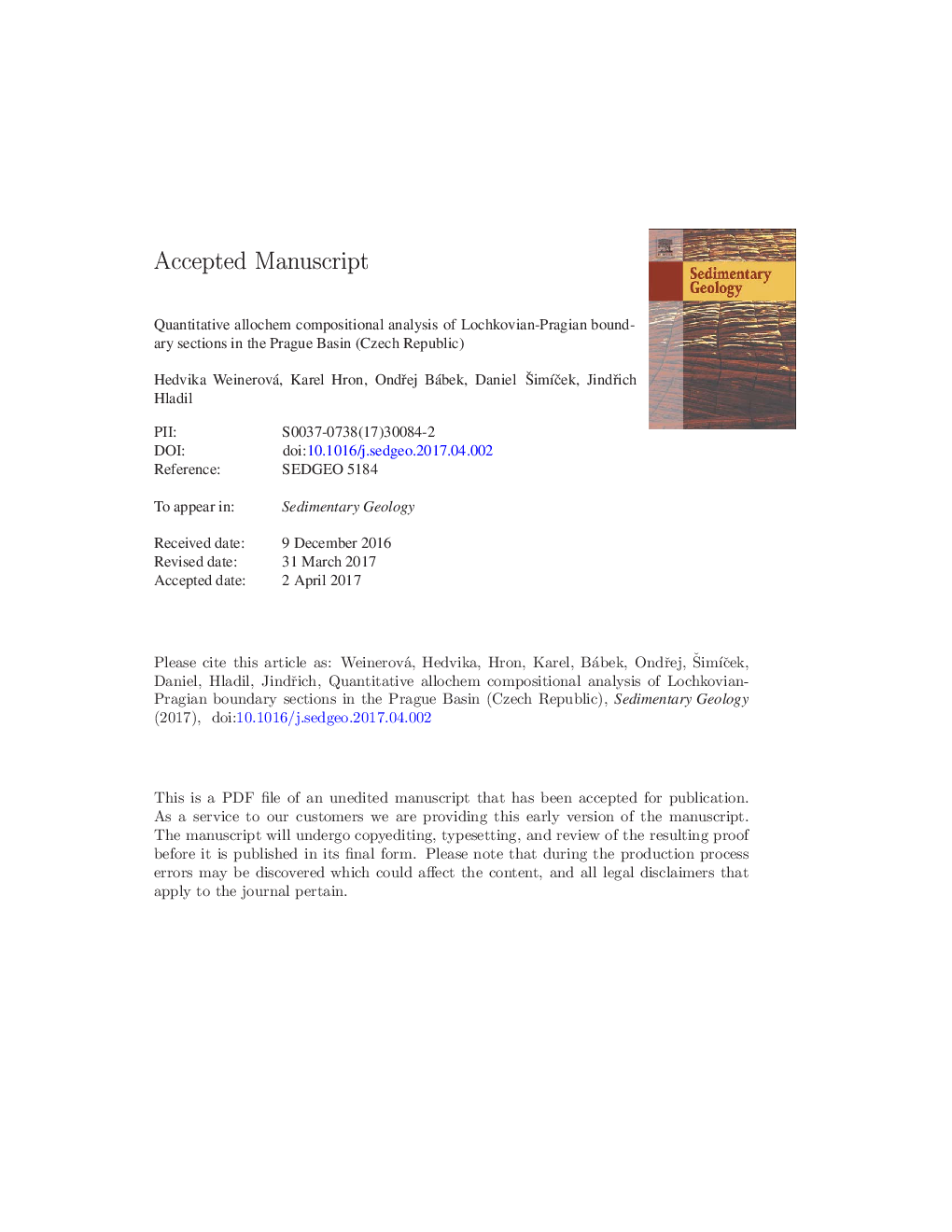| Article ID | Journal | Published Year | Pages | File Type |
|---|---|---|---|---|
| 5781399 | Sedimentary Geology | 2017 | 55 Pages |
Abstract
Quantitative allochem compositional trends across the Lochkovian-Pragian boundary Event were examined at three sections recording the proximal to more distal carbonate ramp environment of the Prague Basin. Multivariate statistical methods (principal component analysis, correspondence analysis, cluster analysis) of point-counted thin section data were used to reconstruct facies stacking patterns and sea-level history. Both the closed-nature allochem percentages and their centred log-ratio (clr) coordinates were used. Both these approaches allow for distinguishing of lowstand, transgressive and highstand system tracts within the Praha Formation, which show gradual transition from crinoid-dominated facies deposited above the storm wave base to dacryoconarid-dominated facies of deep-water environment below the storm wave base. Quantitative compositional data also indicate progradative-retrogradative trends in the macrolithologically monotonous shallow-water succession and enable its stratigraphic correlation with successions from deeper-water environments. Generally, the stratigraphic trends of the clr data are more sensitive to subtle changes in allochem composition in comparison to the results based on raw data. A heterozoan-dominated allochem association in shallow-water environments of the Praha Formation supports the carbonate ramp environment assumed by previous authors.
Related Topics
Physical Sciences and Engineering
Earth and Planetary Sciences
Earth-Surface Processes
Authors
Hedvika Weinerová, Karel Hron, OndÅej Bábek, Daniel Å imÃÄek, JindÅich Hladil,
